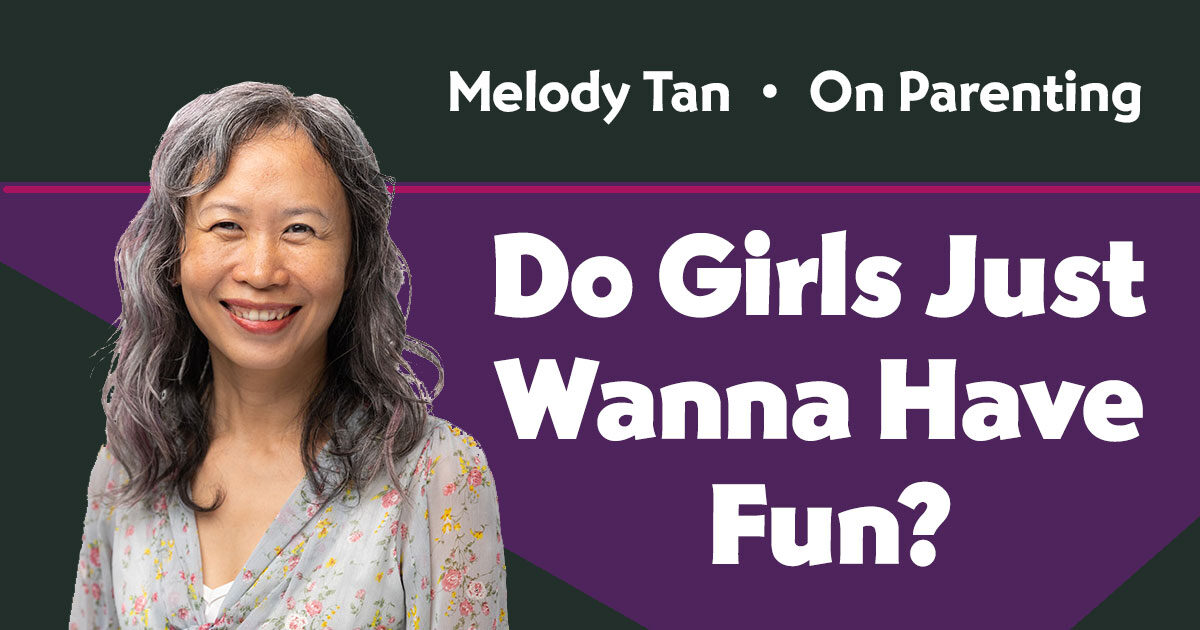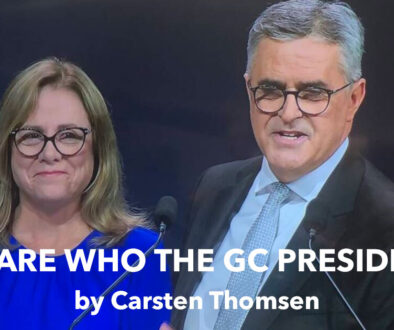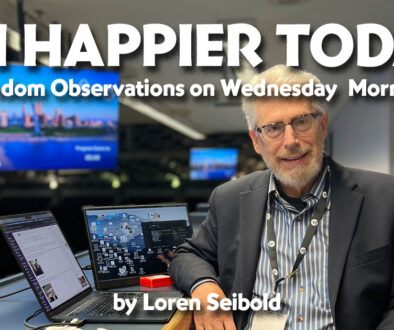Do Girls Just Wanna Have Fun?
by Melody Tan | 13 March 2025 |
My son used to take offense to Cyndi Lauper’s 1980s hit, “Girls Just Want to Have Fun.” This, coming from a then-four- or five-year-old: “Are girls the only ones who can have fun? What about the boys?” he would say.
As he got older and exposed to more songs, he started noticing a pattern: Female empowerment songs seem to be quite common, but anything about men (or boys) appeared to be few and far between.
- “Girl on Fire” by Alicia Keys.
- “Independent Women” by Destiny’s Child.
- “Girl in the Mirror” by Bebe Rexha.
“It’s not fair,” my son would tell me, especially when we explored the meanings and messages behind the songs. Why just girls? he would ask. Why do they need so much encouragement and celebration?
The backlash
Australian politician Peter Dutton once told businessman and podcaster Mark Bouris that men are “fed up” with diversity initiatives in their workplaces. “I think a lot of young males feel disenfranchised and feel ostracised,” he said. “They’re pushing back and saying, ‘Well, why am I being overlooked at work for a job?’”
Financial Review reports that 21 per cent of men who were on board with gender diversity efforts said males were being discriminated against, while 22 per cent believed gender equity efforts caused divisions and resentment among employees.
There is a growing tide of men who feel disenfranchised and discriminated against in gender equality programs. Around 50 per cent, if research reports are accurate.
Over in Germany, an increasing number of young men are voting for the far right because they don’t identify with the other political parties who often focus on themes such as feminism, equality, and women’s rights.
Then there’s self-described misogynist Andrew Tate, who preaches violence and disrespect towards women, and has (sadly) influenced a large amount of young men online.
These are men who grew up as boys in an environment where they’ve seen (and some were probably even raised by) strong, independent women with successful careers. These women were able to go to university if they chose to, and can vote freely, speak publicly, own property, and walk home alone late at night without (too much) fear.
Like my son, many of these men probably don’t understand how much progress we’ve made as a society in the last little while so that women are treated much more equally than they used to be a mere 50 or 60 years ago. To them, gender equality is the norm, so focusing on empowering only women feels somewhat unfair.
The reality
I was recently one of three women in a room full of men discussing an initiative against domestic violence and gender-based violence. There was a real dissension by the men about the initiative’s focus on women as victims.
“Men can be victims too,” they pointed out—and rightly. Their arguments, however, went further. “I believe we should not tolerate violence, full stop. There’s no need to focus on violence against women. Let’s support everybody.”
On the surface, it seems a valid argument, just like why we should do away with diversity programs. If we’re treating everybody equally, singling out specific groups to help seems oxymoronic… if we were in a perfect world.
The harsh reality is we’re neither in a perfect world nor on an equal playing field.
In Australia, one in four women have experienced violence from an intimate partner, as opposed to one in 14 men. More women than men experience family, domestic, and sexual violence. The statistics aren’t much different in the rest of the world.
I’m not saying we shouldn’t support or protect men (or children, for that matter) from violence. What I’m saying is there is a stronger focus on helping women because there are simply more female victims. Diversity and equality programs are designed to make the fields equal, and currently, despite the advances we’ve made and the songs we hear, women are still not equal.
The latest gender pay gap figures in Australia reveal an almost 22 per cent average difference between men and women. That means for every $1 a man earns, women earn 78 cents on average. It’s not that women are paid less than men for doing the same job—that’s illegal in most countries—it’s simply that women have lower earning power because they often don’t have the same access to career opportunities, usually due to caring responsibilities and domestic work.
The future
The world we live in today is still not equal. Sure, it doesn’t look like the Leaning Tower of Pisa anymore, but there is still a tilt to it that is enough to make anyone experiencing it feel unbalanced. Living with privilege means we can find it difficult to see, understand, and accept what somebody else is going through, but it doesn’t diminish the other person’s reality.
So yes, it does appear many of our initiatives today seem to be favoring women. For those with no historical knowledge or lived experience, women appear to be the “golden child” while men are neglected and left to languish.
Some may argue that like a pendulum, we’ve swung too far towards empowering women. Sadly, like what pendulums do, it looks like the world may be on the cusp of swinging back to the other end.
How do we find the happy medium? Where is the laser level to ensure the field is balanced? I don’t have an easy answer, but for my part, I’m going to continue to have conversations with my son, so that he knows what the world was like before him and the actions that were taken to shape it to what it is now. For it is only by knowing our history that we are able to understand our present.

Melody Tan is a freelance writer, content creator, and editor for both print and digital. She is currently the project leader of “Mums At The Table,” a multimedia initiative aimed at supporting mothers in their parenting journey, through education and community. She and her husband live in Sydney, Australia, with their son.




